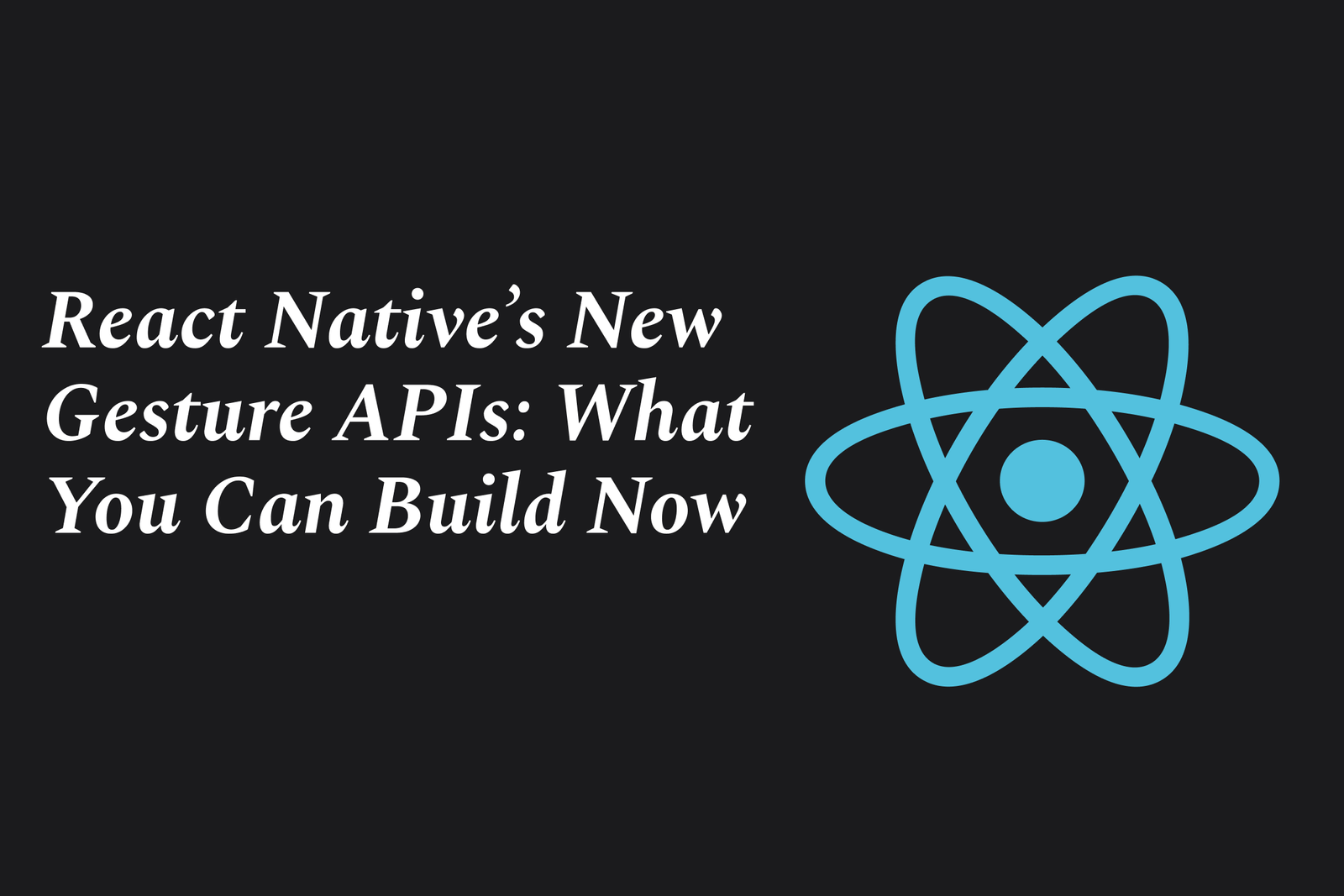React Native?S New Gesture APIs: What You Can Build Now
React Native’s new Gesture APIs, powered by Reanimated 2, enable developers to build smooth, high-performance gestures and animations that run on the native UI thread, allowing for responsive, complex interactions like swipes, drags, and pinch-to-zoom with minimal lag on both iOS and Android.
React Native’s New Gesture APIs: What You Can Build Now
1 ) Introduction to React Native Gesture Challenges
React Native (RN) simplifies mobile cross platform development with JavaScript, but building smooth animations and gestures remains challenging. Performance issues often arise due to the communication bridge between JavaScript code and native UI threads, especially for animations that demand 60fps for smooth user experience.
2 ) Performance Impact of Animations in React Native
Animations running solely in JavaScript may cause dropped frames resulting in choppy or laggy UIs. Although React Native’s built in Animated API offers native thread execution of animations, it has limitations in performance, ease of use, and expressive power.
3 ) The Need for a New Gesture and Animation Solution
Developers require a solution that:
Executes animations primarily on the native UI thread to maximize performance
Allows declarative animation coding in JavaScript
Minimizes reliance on the JavaScript to native bridge to reduce performance overhead
Such a solution simplifies the mental model while ensuring buttery smooth animations.
4 ) Introducing React Native Reanimated Version 2
React Native Reanimated 2 is a major overhaul of the original Reanimated library that:
Replaces the built in Animated API with a more powerful and performant alternative
Allows animations and gestures to run natively, dramatically improving smoothness and responsiveness
Enables declarative and flexible animation and gesture handling through a new JavaScript API
Supports complex animations and gestures with ease, making it feasible to create sophisticated UI experiences
5 ) What You Can Build With the New Gesture APIs
With the new gesture and animation APIs powered by Reanimated 2, developers can:
Implement smooth, interactive gestures such as drag, swipe, pinch, and rotation
Create complex gesture based animations and UI feedback
Combine multiple gestures seamlessly without performance pitfalls
Develop engaging UI components like sliders, carousels, collapsible headers, and beyond
Enhance user interactions with high fidelity and native like responsiveness on both Android and iOS
6 ) Conclusion
React Native’s new gesture APIs, powered by Reanimated 2, unlock the potential for developers to build rich, performant, and interactive mobile experiences. By moving animations and gesture handling primarily to the native UI thread, developers can maintain a declarative JavaScript coding style while delivering smooth, responsive apps users expect. This marks a significant step forward in the React Native ecosystem for gesture and animation development.
https://justacademy.in/news-detail/adaptive-ui-in-flutter-4.0
https://justacademy.in/news-detail/flutter-india-summit-2025:-key-takeaways
https://justacademy.in/news-detail/android-security-vulnerability-patches
https://justacademy.in/news-detail/android-apps-leveraging-machine-learning
https://justacademy.in/news-detail/android-apps-integrating-blockchain
Related Posts
Java supports GDPR and data privacy by enabling secure data handling through encryption, controlled access, and precise data management. It allows developers to minimize PII exposure, ensure data confidentiality, and design workflows that comply with data protection regulations effectively.
Java code quality tools have evolved to include advanced static analysis, integrated security checks, and AI-powered code reviews. These updates help developers detect bugs, enforce coding standards, and enhance security, streamlining the development process and improving overall code reliability.
Java remains a cornerstone in big tech companies, evolving with modern features like records, pattern matching, and virtual threads. Its robust ecosystem, enhanced performance, and growing AI integrations keep it vital for both legacy systems and innovative new projects.
Java and CI/CD pipeline optimizations streamline Java application development by automating builds, tests, and deployments. They improve efficiency through parallelization, caching, and secure secrets management, enabling faster feedback loops and more reliable, scalable software delivery.
Java supports modern cryptography standards through its flexible Java Cryptography Architecture (JCA), enabling integration of advanced algorithms like AES, EdDSA, and post-quantum tools. Libraries like Bouncy Castle offer FIPS-certified, hardware-accelerated implementations for secure development.
Java 23 enhances record patterns by enabling concise, direct destructuring of record components within pattern matching, simplifying type checks and data extraction. This improvement boosts code readability and expressiveness by reducing boilerplate in handling immutable data classes.
Java remains a top choice for mobile app backends, powering scalable, secure, and high-performance server-side solutions. Latest trends include cloud-native microservices, reactive programming, and enhanced JVM optimizations, enabling efficient, flexible, and robust mobile backend development.
Java SE 24 and LTS Java SE 21 offer enhanced features and performance, while Apache Spark 4.0.0 introduces Scala 2.13 support and advanced ML and SQL capabilities. Together, they empower developers to build scalable, high-performance data applications with modern tools.
JUnit 5 modernizes Java testing with a modular architecture, improved assertions, and seamless Java 8+ support. Beyond JUnit, tools like Mockito and AssertJ enhance mocking and assertions, creating a powerful, flexible ecosystem for writing clean, efficient Java unit tests.
Java plays a pivotal role in cloud automation tools by providing a robust, platform-independent language used to build scalable automation frameworks like Jenkins and Selenium, enabling efficient CI/CD pipelines, testing, and orchestration across diverse cloud environments.










